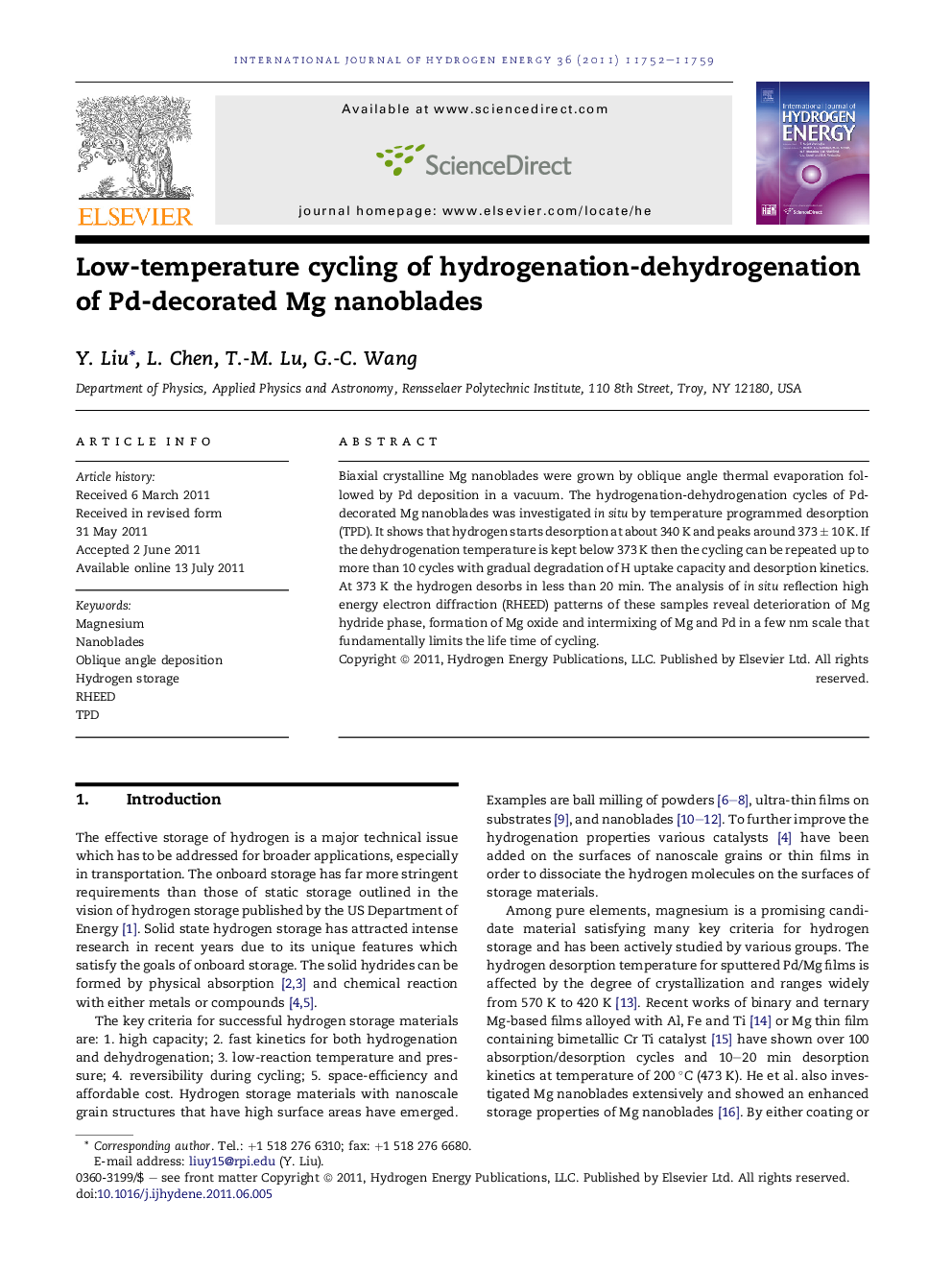| Article ID | Journal | Published Year | Pages | File Type |
|---|---|---|---|---|
| 1275866 | International Journal of Hydrogen Energy | 2011 | 8 Pages |
Biaxial crystalline Mg nanoblades were grown by oblique angle thermal evaporation followed by Pd deposition in a vacuum. The hydrogenation-dehydrogenation cycles of Pd-decorated Mg nanoblades was investigated in situ by temperature programmed desorption (TPD). It shows that hydrogen starts desorption at about 340 K and peaks around 373 ± 10 K. If the dehydrogenation temperature is kept below 373 K then the cycling can be repeated up to more than 10 cycles with gradual degradation of H uptake capacity and desorption kinetics. At 373 K the hydrogen desorbs in less than 20 min. The analysis of in situ reflection high energy electron diffraction (RHEED) patterns of these samples reveal deterioration of Mg hydride phase, formation of Mg oxide and intermixing of Mg and Pd in a few nm scale that fundamentally limits the life time of cycling.
► Pd-decorated Mg nanoblades were recyclable at 373 K with fast kinetics. ► The degradation of nanostructures after cycling was studied by RHEED. ► Oxidation of Mg and Pd/Mg intermixing were the possible causes of the degradation.
